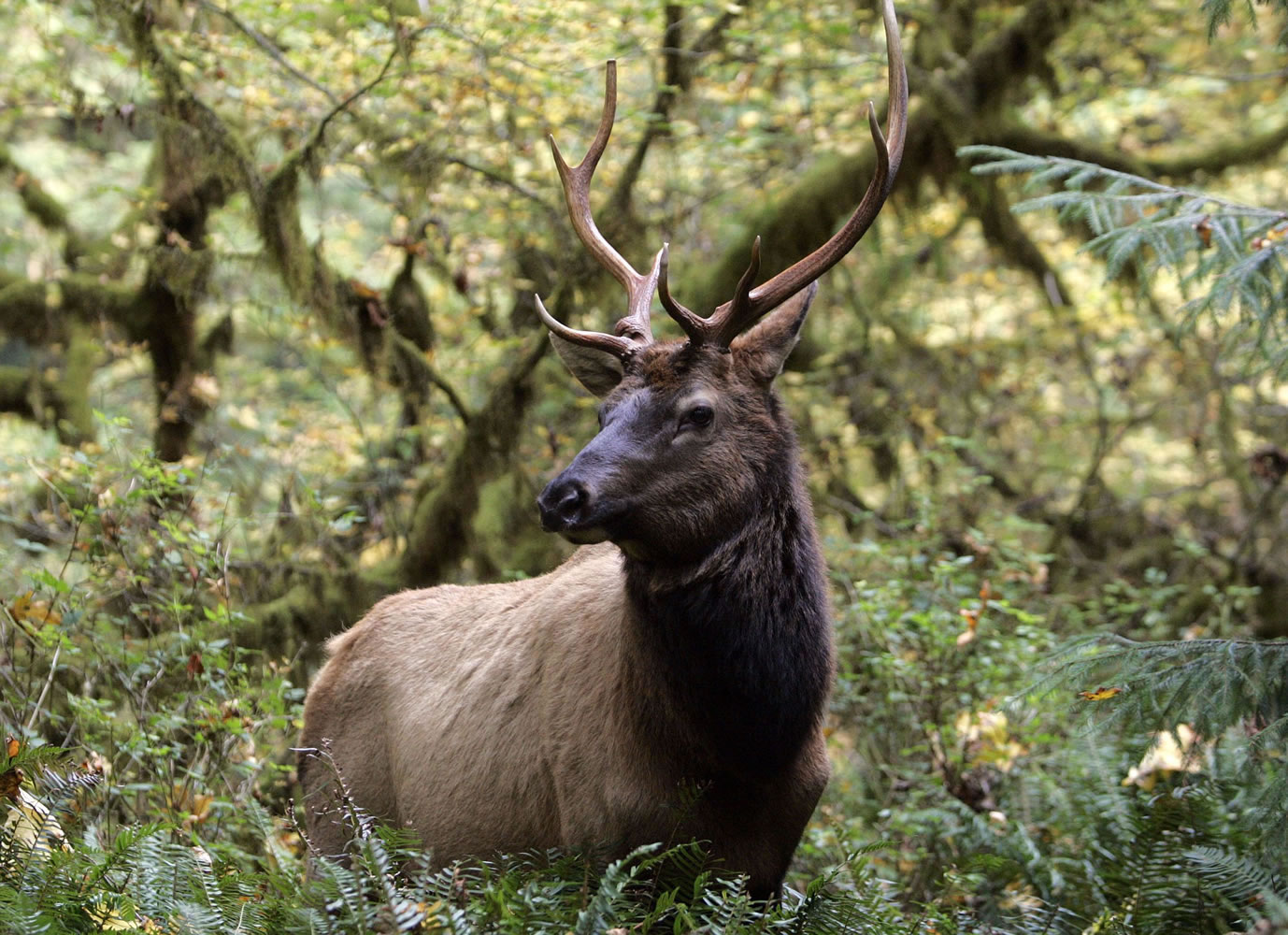Elk hunting is pretty predictable in Southwest Washington — at least the modern firearms season.
About 15,000 hunters go afield and about 5 percent to 7 percent harvest a bull.
The vast majority of the bulls are killed in the initial three days. It might snow at higher elevations, but probably not.
This season is different though.
Saturday through Nov. 12. Three-point antler minimum in units 503, 505-520, 550, 560, 568, 572, 574 and 578. Three-point or antlerless in units 501 and 504. Any elk in unit 564 (Battle Ground).
Weyerhaeuser, a giant private timber land owner, has switched from allowing free access to its lands to a new $150 permit. Permits provide access to 325,000 acres of Weyerhaeuser land, although 52,000 acres of the company’s land remain accessible without a permit.
Rayonier has expanded its permit system for access and no longer offers free access to its property in the fall. Rayonier owns about 380,000 acres in Western Washington, some of which is in Wahkiakum and Pacific counties.
Add to the land access upheaval is the well-publicized fact that Southwest Washington is the epicenter of an elk hoof disease outbreak.
The outbreak is widespread, and a high percentage of some groups of elk are afflicted.
The Washington Department of Fish and Wildlife is using reports from citizens to try to get a handle on just how geographically wide hoof disease has spread. Oregon has a reporting system to see if the disease has spread south of the Columbia River.
Will the changes in land access coupled with hoof disease change the dynamics and the relatively predictable nature of the modern firearms elk season?
Hoof disease will have a minimal effect on elk hunting participation, according to Eric Holman, a district wildlife biologist for the state Department of Fish and Wildlife.
Holman’s district includes Cowlitz, Wahkiakum and Lewis counties — which means he has three elk herds (St. Helens, Willapa Hills and South Rainier), a nasty disease, a lot of habitat on private property and marginal habitat on public lands.
“Unfortunately, hoof disease has been around since 2008 and most of the hunting public has known about it for some time,” Holman said. “I think any reduction in hunter participation due to the presence of hoof disease will be greatly overshadowed by the changes in hunting access and land management.”
Holman said it’s very hard to gauge how hunters are going to react to the increase in fee hunting.
“I’ve heard essentially three responses,” he said. “First, about 50 percent of those I’ve spoken to say something along the lines of ‘I’m OK with the access fee because it assures that I have a place to go and that not quite so many casual hunters will be in my area.’
“Next, about 40 percent have been very negative regarding this development. They talk about quitting hunting or going out-of-state.
“A small subset, maybe 10 percent, have stated that they will try to find a new area in Washington.”
Holman adds the caveat that his opinion is anecdotal and “just my perception of whoever ended up on the phone, in the field or at our office in person.”
When the season is over, will all the flap have been much ado about nothing, with the usual number of hunters killing the usual number of elk in the usual places?
“Probably not this time around,” Holman said. “We have one year of the effect of this from Game Management Unit 667, which is dominated by the Vail Tree Farm.
“Deer hunter numbers dropped to about 30 percent of their historic number in this GMU, but they did harvest about the same number of deer as usual.”
It’s possible, he added, less than the usual number of hunters will kill the usual number of elk in the usual places.
“We don’t know yet,” Holman said.
Axel Swanson, a veteran Cowlitz County elk hunter, said it’s hard to say if the new fee will drive hunters from Weyerhaeuser Co. land to nearby state and federal land.
“Some folks are talking that maybe this is the year not to hunt,” he said.
The new fee, plus the notoriety of hoof disease, has definitely added a new element, Swanson said.
“How they interplay, we’ll just have to wait and see,” he added.
David Anderson, district biologist for Clark, Skamania and Klickitat counties, said he expects to see some hunters shift east to the Wind River, Oklahoma campground and Trout Lake areas this season.
“We’ve already seen it in deer season,” he said.
As far as this year’s elk population in Southwest Washington, it’s down from the numbers of a few years ago.
The St. Helens Herd Plan purposely sought to reduce the population to bring the number of animals more in line with the habitat available. Add to that a couple of relatively bad winters and extended hot, dry autumns, Holman said.




